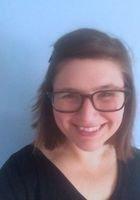Connect with hundreds of tutors like Pam
America's #1 Tutoring Platform
Who needs tutoring?
FEATURED BY
TUTORS FROM
- YaleUniversity
- PrincetonUniversity
- StanfordUniversity
- CornellUniversity

Pam
Bachelors, Education
Marshall University, Florida Atlantic University
About Me
I taught AP Human Geography for 4 years at the high school level, and IB Social and Cultural Anthropology SL for 12 years . Since retiring last June, I found that I missed student contact and the chance to help students achieve their goals. I had excellent test score results for both AP Human Geography and IB Social and Cultural Anthropology SL. Therefore, tutoring seems to offer an opportunity to continue doing what I love, but on a part-time basis.
Education & Certifications
Marshall University
Bachelors, Education
Florida Atlantic University
PHD, Comparative Studies
Q&A with Pam
My philosophy is to get to know your students and understand their needs and goals. This knowledge makes it easier to adapt the lessons to the student's daily life. How can you help a student become an independent learner? By teaching him or her study skills, such as outlining and reading strategies. How would you help a student stay motivated?
Tutoring Subjects
Connect with a tutor like Pam
Connect with a tutor like Pam
Tutors with Similar Experience


